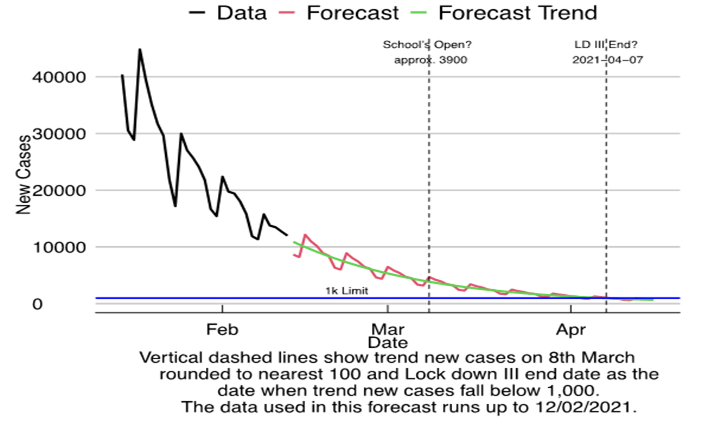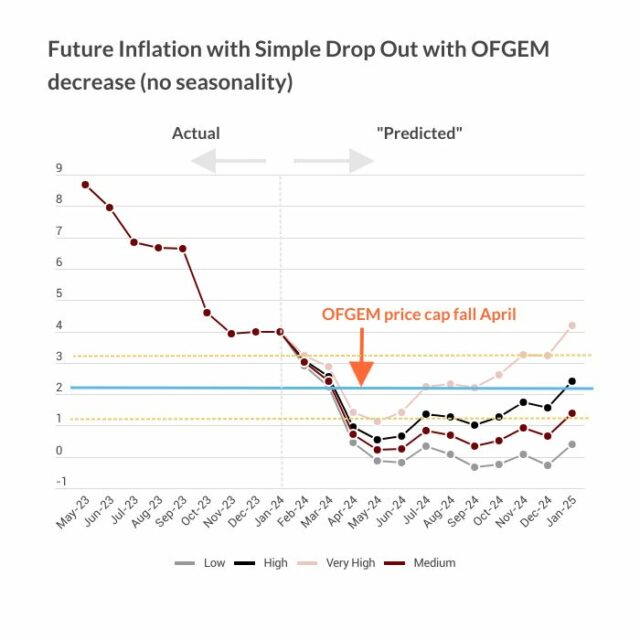Press Release: NIESR launches new weekly COVID-19 tracker: Time series approach reveals sharper fall in UK R number than SAGE analysis and projects rapid fall in new cases
Figure 2 – UK forecast of new COVID-19 cases
Main points
- The NIESR estimates use a new time series model to project new cases of Covid-19 and produce timely estimates of the R number. The forecasts reported here were made using publicly available data on 16th February 2021.
- Figure 1 shows that the effects of lockdown were becoming apparent by mid-January. By that time the Reproduction number, R, which is the average number of secondary infections currently generated by an infected individual, had fallen to significantly below 1 to lie in the range of 0.8 – 0.9.
- Our time series approach reveals that the reduction in the R number in January occurred somewhat earlier than the analysis by SAGE suggests. The reason is that our model can adapt very quickly to emerging information contained in the data and thus estimates more sensitive to changes in trends.
- Should new cases in the UK continue to fall at the current rate, we can expect as a result of our model for them to fall below 1,000 cases by 9th April 2021. On 8th March, when schools are expected to reopen, the projected number of new cases will be around 3,900 (Figure 2).
- Regional differences are still apparent but less so than in the later part of last year (Figure 3). Currently, London and the South East have the lowest R numbers while Scotland and Yorkshire and the Humber have the highest.
Dr Craig Thamotheram, Senior Economist – Macroeconomic Modelling and Forecasting, said: “According to the latest data on new cases, our new model shows an R number for the UK in the range 0.8 – 0.9 and points towards new cases falling below 1,000 by early April. The model has consistently been showing this from mid-January, as it started to pick up the full extent of the lockdown. The advantage of the time series approach that underpins the results is that it analyses emerging information on the epidemic contained in the data quickly.”
Please find the full analysis in the document attached
———————————————————————
Notes for editors:
For further information please contact the NIESR Press Office: press [at] niesr.ac.uk or
Luca Pieri on l.pieri [at] niesr.ac.uk / 07930 544 631
National Institute of Economic and Social Research
2 Dean Trench Street
Smith Square
London, SW1P 3HE
United Kingdom
Switchboard Telephone Number: 020 7222 7665
Website: http://www.niesr.ac.uk




















